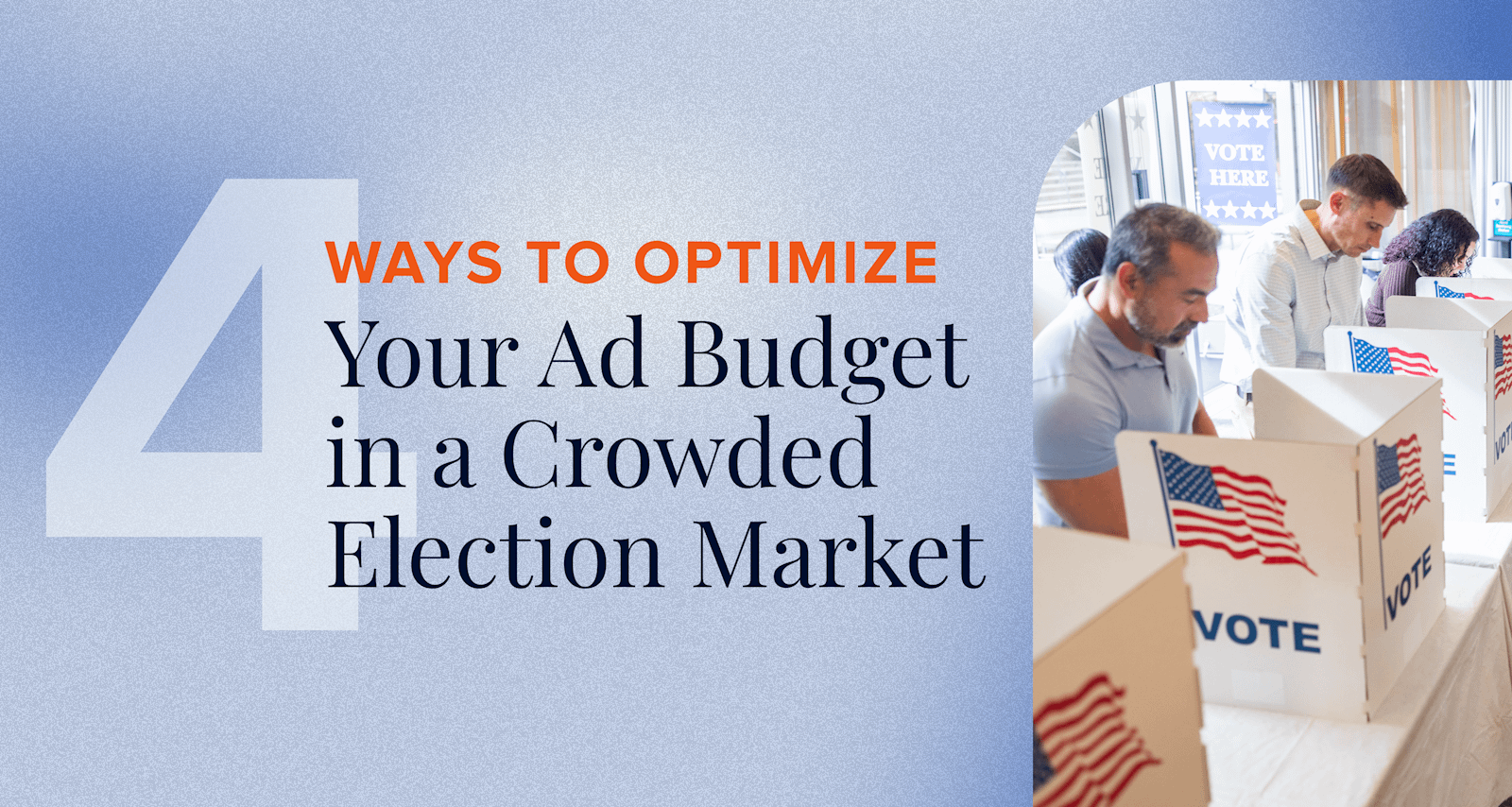Maximizing the Impact of Your Media Spend During Election Season
Published by Spinutech on August 8, 2024

If you want to know if it’s election season, all you have to do is turn on the television. Or watch a video on YouTube. Or log into literally any social media platform.
Election seasons, especially in the United States, are often defined by political ad spending.
The influx of political advertising during these periods creates unique challenges for marketers everywhere. The landscape becomes more costly and competitive for non-political advertisers, impacting media spend for brands across social media, display, and video channels.
But there are strategies for adapting your campaigns to remain competitive.
Political Ad Spend is Approaching Record-Breaking Levels
The money train in politics is showing no signs of slowing.
Political ad spending is forecasted to reach up to $12 billion this year — a 29% increase from the last presidential election cycle in 2020. The rapid advancement of generative AI has added an additional layer of complexity, flooding social media platforms with a deluge of AI-generated content that could spread unprecedented levels of mis- and disinformation.
Advertisers Need to Brace for Impact
Setting aside the political implications and assessing the landscape through an advertising lens, this creates a serious challenge for marketers.
Increased Costs
CPMs are expected to rise across the board, with Connected TV (CTV) becoming the centerpiece of political advertising strategies. Projections indicate that 45% of digital political ad spend will go to CTV/OTT platforms. This shift will significantly impact the CTV advertising landscape for all brands, with CTV potentially seeing increases of around 20% during the election period. Historical data shows that about 50% of political ad dollars are spent in the 30 days leading up to the election. Brands should expect the most significant CPM increases during this crucial period.
Inventory Scarcity
Major streaming partners like Hulu, Peacock, ESPN, CNN, Fox, and NBC are likely to sell out of inventory quickly. Additionally, new players like Netflix, Disney+, and Amazon are now offering their inventory, further complicating the landscape. Geographically, key swing states will likely see the most intense competition for ad inventory, especially in the CTV space.
Brand Safety Concerns
The polarized nature of political discourse creates potential risks for brand advertisers, necessitating stricter content controls. The FCC is proposing new disclosure requirements for AI use in political ads on various media platforms. Brands should stay informed about these developments and how they might affect the broader advertising landscape.
4 Strategies for Optimizing Ad Spend
Here are four strategies to help ensure your ad campaigns don’t get lost in election season.
1. Diversify Your Ad Placements
Consider shifting spend towards platforms that don't accept political advertising, such as LinkedIn, Spotify Ad Studio, TikTok, or Pinterest. It may also be worth investing in programmatic guaranteed deals and private marketplaces (PMPs) to secure premium placement and avoid potential brand safety issues. While CTV will be heavily impacted, display and native ads may offer alternatives to avoid the market influx leading up to the election.
2. Adjust Timing & Budget Allocation
Plan your ad campaigns strategically, potentially avoiding peak political advertising periods or adjusting budgets to maintain visibility during these times. It may be worth increasing your budget by 5-10% overall, especially during August, September, and October, to remain competitive amid the election season spike in media spending.
3. Leverage Safety Tools to Protect Your Brand
Election season is rife with potential brand safety issues due to the prevalence of political content and misinformation. You can take steps to protect your brand by applying Brand Safety segments to your ad campaigns to avoid political content categories, targeting or specific site lists, or using keyword negation to avoid sites with political content.
4. Contrast the Tone of Your Messaging
To stand apart from the often negative political content, be intentional about tailoring your ad creative to be lighter, more upbeat, and even humor-driven. This approach can help your brand stand in contrast to political ads, appealing to consumers fatigued by the political discourse.
A Proactive Strategy is the Key to Election Season Success
The 2024 election season presents both challenges and opportunities for brand advertisers. By understanding the shifting landscape, preparing for increased costs and competition, and implementing strategic approaches to media buying, brands can effectively navigate this complex period. Stay agile, plan ahead, and leverage diverse advertising channels to maintain your brand's visibility and impact during this highly charged political season.
If you want to talk more about how to best position your advertising to compete and deliver business-critical results during election season, let’s chat.